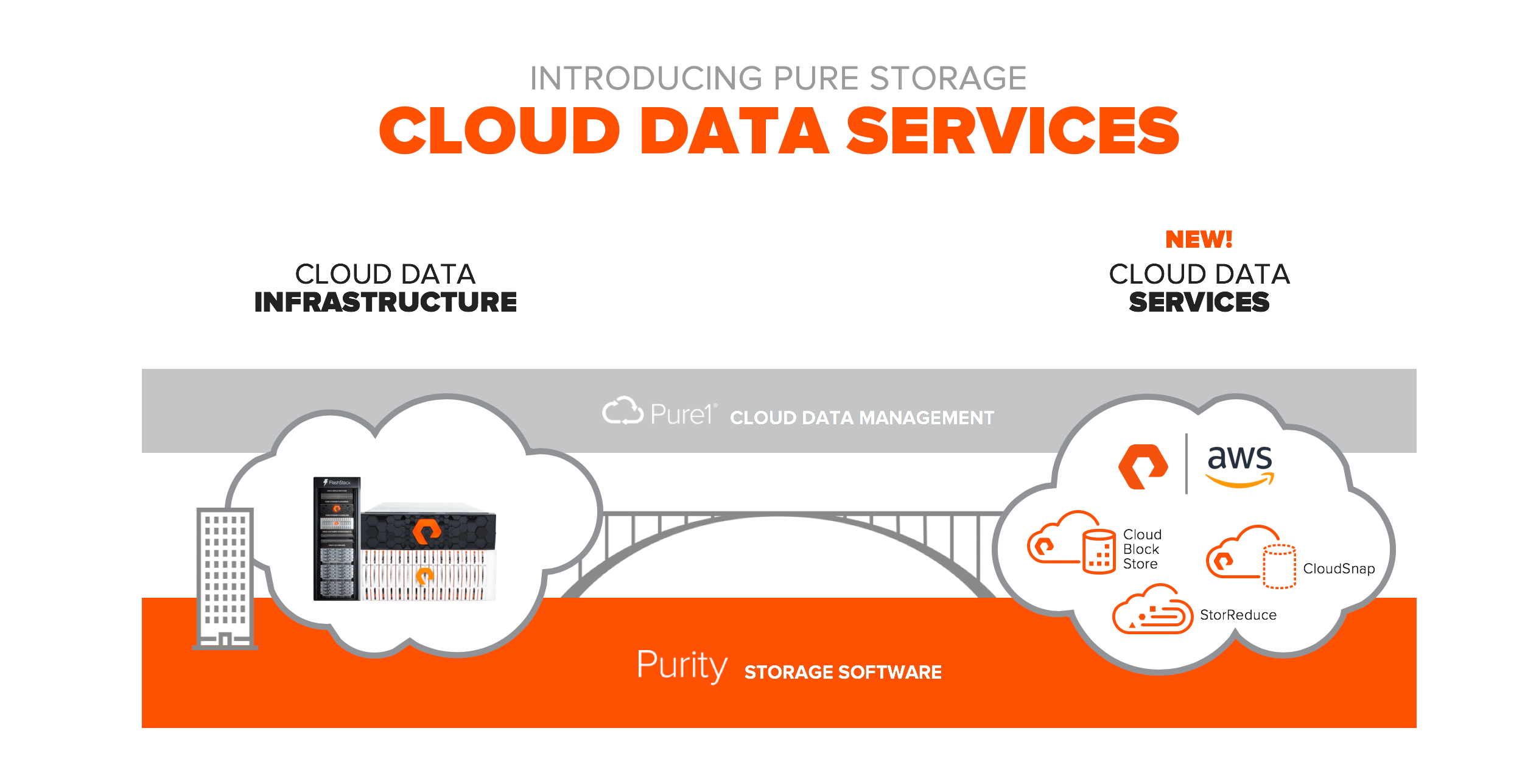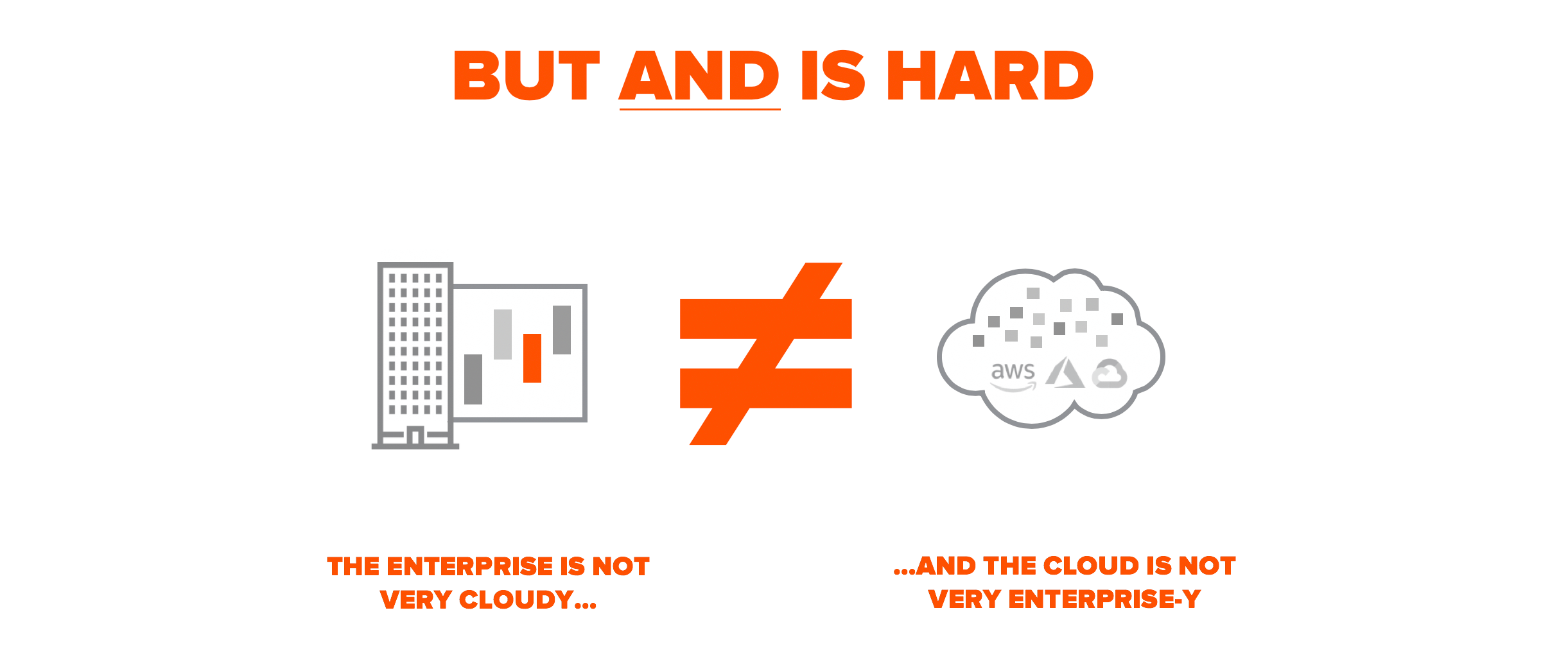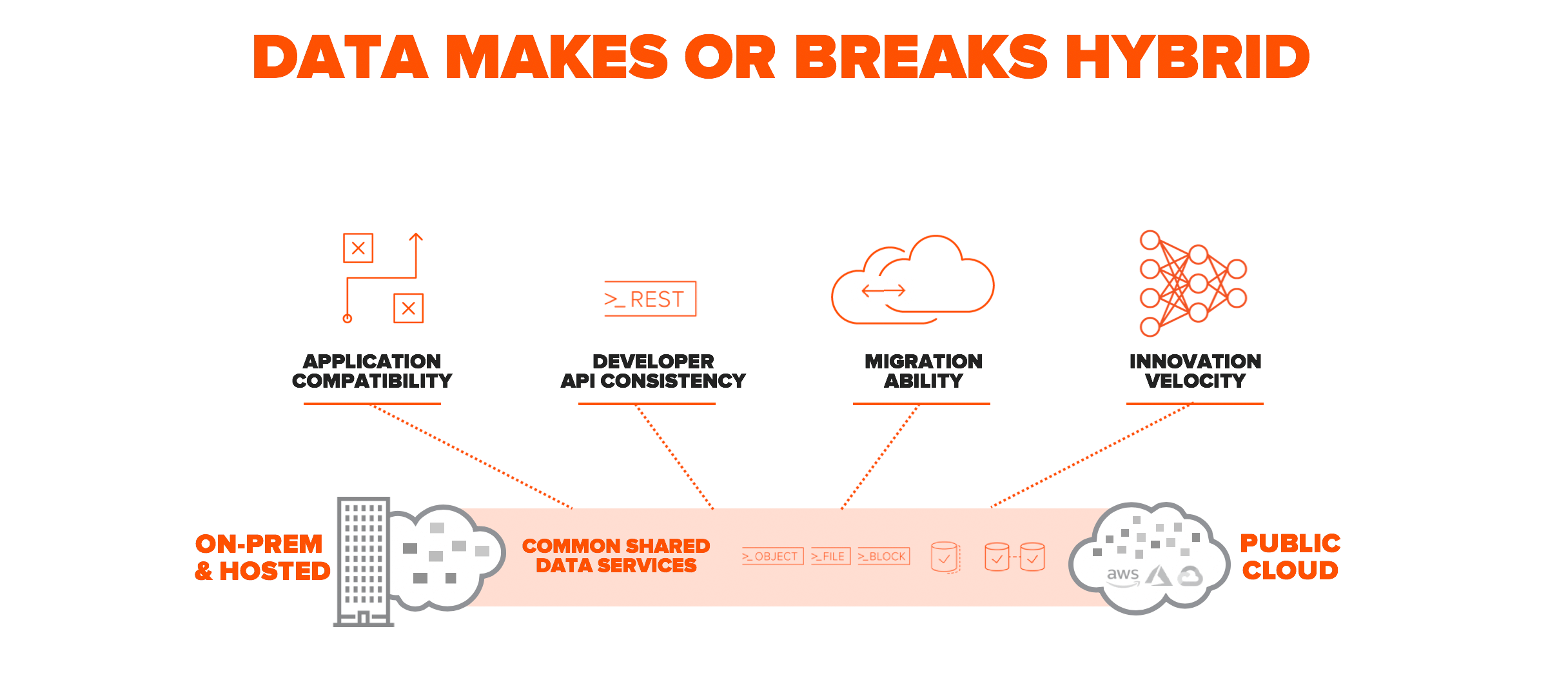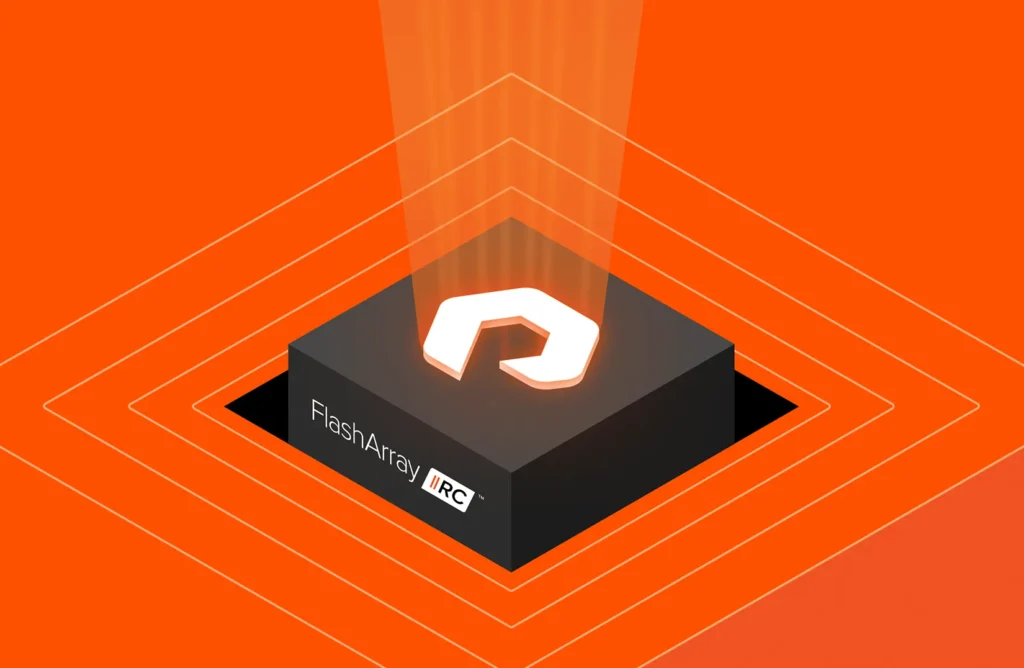The past nine years at Pure have been busy – we’ve been working hard to bring growth and innovation back to the enterprise storage market, shaking things up with everything from flash to cloud-based management, AI, and a wholly-better ownership and support model. But increasingly our customers have started to stretch their IT strategies across owned infrastructure, SaaS, and public cloud providers. And a common refrain we’ve gotten from our (sometimes fanatic) customers is “why can’t I have the same Pure experience in the public cloud?”
We’re starting a new chapter for Pure customers – where we’re taking everything we’ve learned on-prem about simplicity, performance, and autonomous support – and bringing it to the public cloud by launching a new set of Pure Storage Cloud Data Services, running as software natively on the Amazon AWS platform.

We are announcing three new cloud data services, which work together to deliver a unified cloud:
- First, we announced the beta availability of Cloud Block Store, which is based on Purity software running natively on AWS. Cloud Block Store is an industrial-strength block storage offering, enabling mission-critical enterprise applications to run in the cloud with all the capabilities that customers expect from high-end storage arrays. Cloud Block Store also provides new capabilities and resilience for web-scale, cloud-first apps.
- Second, we announced the general availability of CloudSnap, which delivers cloud-based data protection built right into our flagship FlashArray. CloudSnap makes it easy to copy snapshots directly to the cloud for both data protection and application migration.
- Third, we announced our beta of StorReduce, a cloud-first, deduplication engine for modern backup. This software is designed to enable simple backup, rapid recovery, and cost-effective data retention in public object storage. When combined with a FlashBlade on-prem, the solution provides “Flash to Flash to Cloud” data protection enabling both rapid restore and low cost, long-term cloud retention.
These new data services are designed to enable customers to approach hybrid cloud with a new level of unified infrastructure, so now customers can:
- Build their clouds with the highest levels of performance, resiliency, and efficiency;
- Run anywhere, delivering hybrid cloud by enabling enterprise apps to easily move to the public cloud, and web-scale apps to easily move on-premises; and
- Get protection everywhere by introducing a new modern model for data protection, which leverages on-prem flash for the fastest recovery, and low-cost object storage for the best and most flexible retention.
It’s going to be an exciting day, and it’s just the start of the journey. We look forward to working with our customers in unifying their clouds and innovating together, as we bring these and many more new data services to market in the coming years.
We invite you to learn about our new announcements. View our online launch event showcasing Pure technology leaders, analysts, and customers; or read our deep-dive blogs with demos to help you get right into the details:
- Introducing Cloud Block Store for AWS
- Build Your Ultimate On-premises Cloud
And if you’d like to read a bit more about Pure’s views and vision for hybrid cloud, read on…
Cloud Strategy Evolving: From Hybrid Cloud → Hybrid Apps
It’s hard to believe we’re now 15 years into “cloud” – and for most organizations we’re still just getting going. But the past few years have seen a real maturity in how organizations are thinking about their strategies. Most CIOs have now moved beyond simple “all on prem” or “all cloud” strategies, to realize that both are powerful tools in delivering on their IT strategies. They are opting instead for “hybrid cloud” with a real commitment to using both. But at Pure, we believe that today’s dialogue around whether an app should live “on prem” or “in the cloud” is just a waypoint; what we’re really evolving to are true hybrid applications:

As applications get disaggregated, containerization becomes more prevalent, and strong APIs are built between application components, it is now becoming possible to build an “application” across multiple clouds itself – a “hybrid application”. The clear benefit of this approach is that it unlocks innovation from everywhere – making your developers free to choose the best components, functions, and services from whoever can supply them – instead of getting locked-in to one data center, one provider, or one cloud.
Why are we so confident in this approach? Well, it turns out this is how we build applications at Pure. Pure is more than a bit of an IoT company ourselves… tens of thousands of our storage “devices” were built from day one to “call-home” in real time. As such, we built an “application” called Pure1 to deliver SaaS-based management and support, but beneath the covers, it’s a real-time analytics data pipeline, a distributed web application, and a sophisticated AI cluster – all in one “application”.

In the beginning, we built this application completely on the public cloud. As usage grew, it became clear that we needed to make the application multi-cloud for greater agility and cost-effective access to innovation. So we containerized the entire application, and it now runs successfully as a hybrid application, with data spread between Pure’s hosted private cloud (leveraging FlashArray and FlashBlade storage), the Salesforce cloud, and AWS. And now every time the development team builds a new function, they have the flexibility and choice to do it where they please, and to leverage whatever cloud components help them get there the fastest at the lowest cost.
At Pure one of our largest customer segments is cloud SaaS providers who build their clouds on Pure data infrastructure, and we noticed an interesting trend in these SaaS providers: they were evolving to hybrid applications too!

SaaS and born-in-the-cloud companies often started the journey from the opposite side, running primarily in the public cloud, but we’ve seen an increasing desire for them to go multi-cloud and run their own ‘owned’ infrastructure to drive down cost and drive up performance – hybrid applications again!
So whether you are an enterprise or a cloud-native company, the right architectural discussion isn’t on-prem OR cloud, it’s AND: making the right architectural choices to give you access to the innovation in all clouds – both the ones you own and probably many that you rent.
But the reality is that running Hybrid today isn’t always so easy, because AND is hard:

The reality is that there’s still a pretty big gap between on-prem and cloud infrastructure, and that gap is the result of a cloud divide at several layers:

This divide is most obvious at the application tier, where on-prem apps tend to be packaged applications that run in relative islands, and cloud applications tend to be web-scale applications designed to scale horizontally from day one. The management and consumption models are again very different, with dedicated hardware and CAPEX-style consumption on-prem, and complete pay-as-you-go flexibility in the cloud – all consumed and managed via API.
Data Makes or Breaks Hybrid
Nowhere is the cloud divide more extreme than at the storage tier. On-prem, we tend to have dedicated enterprise storage arrays with rich features and resiliency, a model where the application tends to rely upon the storage infrastructure for resiliency. In the cloud, you have relatively simpler storage services. These storage services are designed to be shared and scale almost limitlessly – dictating a very different way to build applications, which often implement a lot of the resiliency into the application itself. It makes sense – each of these storage layers was designed for the applications they support. This is all fine and good – until you want to build hybrid applications with the freedom to easily move. Data becomes a key stumbling block.

The right data strategy is key for hybrid – you need to establish a data architecture that unifies on-prem and cloud applications. First and foremost, it should drive application compatibility, so that apps can move and data can flow. It should have consistent APIs – so that developers can build once, and have a consistent way to interact with data on-prem and in the cloud. This compatibility should make migration of applications easy – giving you the freedom to run applications where you want and have the data follow. And finally, the right data architecture is key to innovation – unlocking new use cases like AI and real-time analytics.
Building a Data-Centric Architecture for Hybrid Cloud
At Pure we have a vision for what this “right” strategy for data is, and we call it a Data-Centric Architecture:

A Data-Centric Architecture isn’t a product from Pure, rather it’s a vision for how we believe customers should be thinking about evolving their data strategy. You can build one with our products, but it takes more than just Pure’s products to deliver on a true DCA. As you build your data-centric architecture, we believe you should focus on five key attributes:
- It should deliver fast, shared data. There just aren’t applications being built today that can live in the world of “slow” – i.e. disk. Modern data should be always fast and built on flash, and it should be built from day one to be shared because tomorrow’s applications expect shared data.
- It should be on-demand and automated. Developers don’t want to call storage admins for storage, they just want to consume it via API and focus on developing. Your storage architecture should be built with this model at the core: on-demand consumption and automated delivery to make phone calls obsolete. Customers are happier, and you reduce your costs by delivering storage via standardization and automation.
- Globally reliable and secure data infrastructure is a must. Today’s applications are built to be global applications, and you need a common way to implement resiliency for all your applications, instead of leaving each application developer to do it as they see fit. The right storage architecture delivers global reliability and consistent security – built right in for everyone.
- Tomorrow’s storage should support hybrid by design. It should easily allow storage volumes to be moved to/from the cloud, making application and data migration easy, but also enabling hybrid use cases for application development, deployment, and protection.
- And finally, it should be constantly evolving and improving. Users expect the cloud to continuously get better, without downtime, delivering more value every year for the same or lower cost – and so should your storage infrastructure. You need to architect for this constant improvement, so you can seamlessly improve your storage services without ever bringing users offline.
And so at Pure – this is our mission – to help customer build a data-centric architecture that truly delivers on unifying cloud.

Explore all of today’s announcements, learn more about what we’re doing, and see how we help customers build their clouds, enable hybrid to run anywhere, and deliver seamless protection everywhere.
We look forward to working with you on this next phase of the journey – it’s going to be an exciting one… and we’re just getting started.

A Dynamic Duo
Learn more about the Pure Storage and Nutanix partnership from Pure Storage CEO Charlie Giancarlo.






